 Image 1 of 9
Image 1 of 9

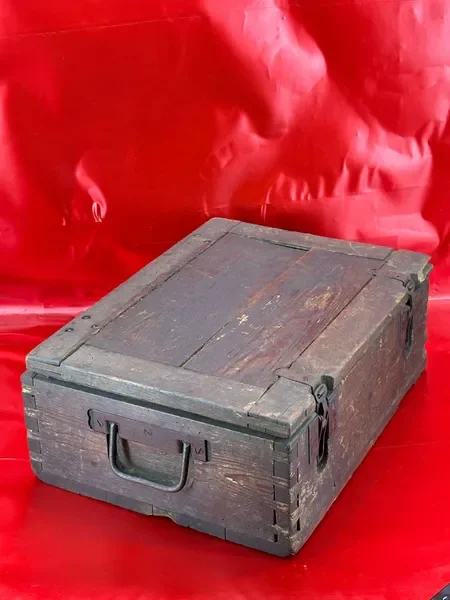 Image 2 of 9
Image 2 of 9

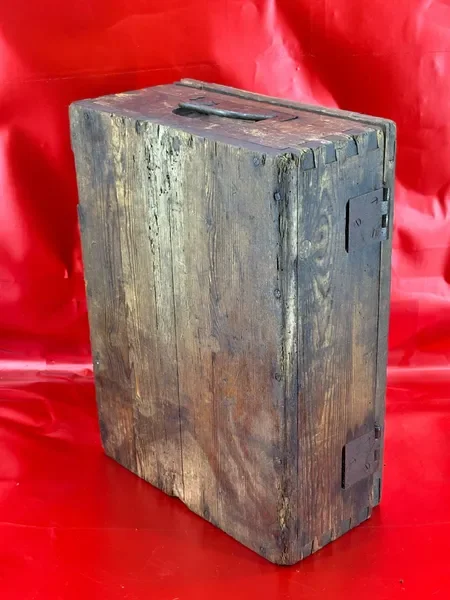 Image 3 of 9
Image 3 of 9

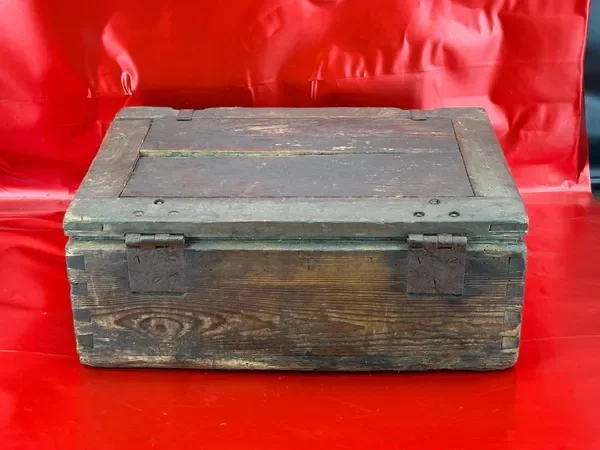 Image 4 of 9
Image 4 of 9

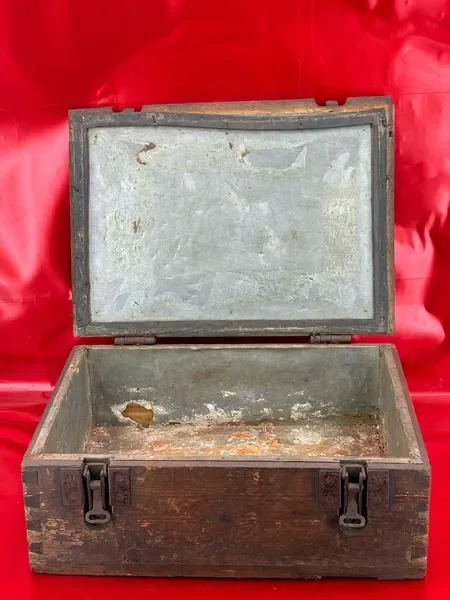 Image 5 of 9
Image 5 of 9

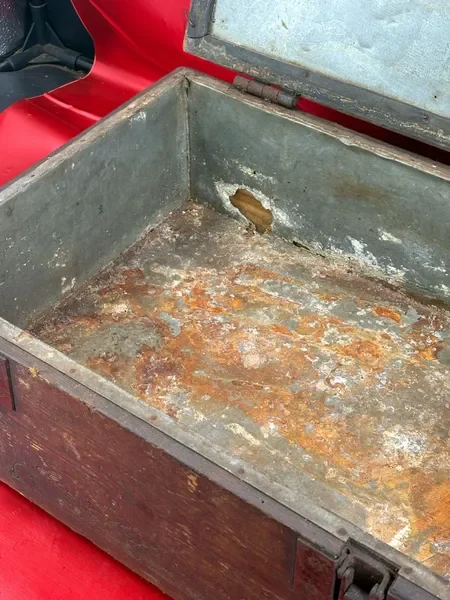 Image 6 of 9
Image 6 of 9

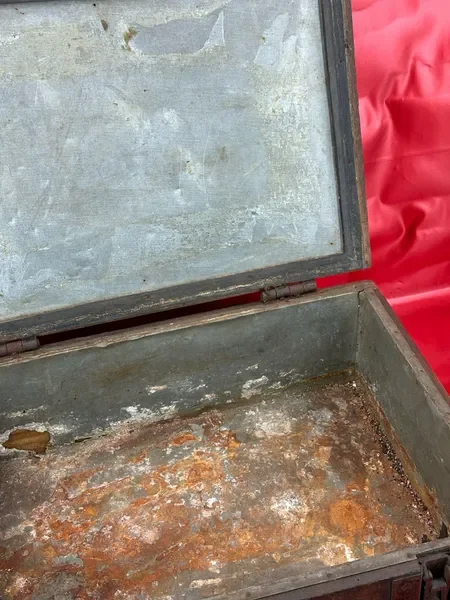 Image 7 of 9
Image 7 of 9

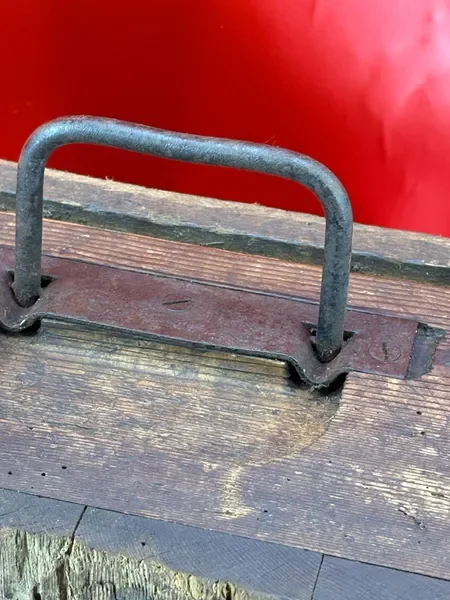 Image 8 of 9
Image 8 of 9

 Image 9 of 9
Image 9 of 9










German airtight wooden ammunition crate a Luftdichter patronenkasten taken from abandoned German vehicles in the village of Mont, just north of Houffalize. in the Ardennes Forest 1944-1945
This is a German airtight wooden ammunition crate, a Luftdichter Patronenkasten, which originally held 1,500 rounds of 7.92?mm ammunition. The crate is in very nice condition, with the wood still retaining most of its original brown stain, though it shows some dirt, discoloration, and minor damage. The original tin liner is still in place, confirming it as the airtight version.
The crate remains solid, not breaking up or falling apart. It has experienced some woodworm, but this has been treated, and the box is well preserved. A small maker mark is present on the side. Both hinges are intact and in good condition; one lock still works fine while the other is fixed, though the lid opens and closes without issue. The metal carry handles are also present. Inside, there are some knocks and marks from use, but nothing significant. This is a fine example of this unusual ammunition crate.
The crate, along with other parts, was taken from abandoned German vehicles in the village of Mont, just north of Houffalize. All the vehicles belonged to the 116th Panzer Division. It was removed from a tank or vehicle by a local farmer around 1946-1948 and used on his farm for many years before being acquired by a local collector, who kept it in his private collection until 2020. This marked the first time it left the Ardennes area since the war.
This is a genuine relic from the Ardennes Forest campaign during the Battle of the Bulge in the winter of 1944-1945, Hitler’s last major offensive in the West. The crate comes with 2 laminated A5 information cards featuring photographs and a map.
The 116th Panzer Division, also known as the "Windhund (Greyhound) Division," was an armoured formation constituted in March 1944 in the Rhineland and Westphalia from the remnants of the 16th Panzergrenadier Division and the 179th Reserve Panzer Division. The 16th had suffered heavy casualties on the Eastern Front near Stalingrad, while the 179th had been a second-line formation on occupation duty in France since 1943.
This is a German airtight wooden ammunition crate, a Luftdichter Patronenkasten, which originally held 1,500 rounds of 7.92?mm ammunition. The crate is in very nice condition, with the wood still retaining most of its original brown stain, though it shows some dirt, discoloration, and minor damage. The original tin liner is still in place, confirming it as the airtight version.
The crate remains solid, not breaking up or falling apart. It has experienced some woodworm, but this has been treated, and the box is well preserved. A small maker mark is present on the side. Both hinges are intact and in good condition; one lock still works fine while the other is fixed, though the lid opens and closes without issue. The metal carry handles are also present. Inside, there are some knocks and marks from use, but nothing significant. This is a fine example of this unusual ammunition crate.
The crate, along with other parts, was taken from abandoned German vehicles in the village of Mont, just north of Houffalize. All the vehicles belonged to the 116th Panzer Division. It was removed from a tank or vehicle by a local farmer around 1946-1948 and used on his farm for many years before being acquired by a local collector, who kept it in his private collection until 2020. This marked the first time it left the Ardennes area since the war.
This is a genuine relic from the Ardennes Forest campaign during the Battle of the Bulge in the winter of 1944-1945, Hitler’s last major offensive in the West. The crate comes with 2 laminated A5 information cards featuring photographs and a map.
The 116th Panzer Division, also known as the "Windhund (Greyhound) Division," was an armoured formation constituted in March 1944 in the Rhineland and Westphalia from the remnants of the 16th Panzergrenadier Division and the 179th Reserve Panzer Division. The 16th had suffered heavy casualties on the Eastern Front near Stalingrad, while the 179th had been a second-line formation on occupation duty in France since 1943.
